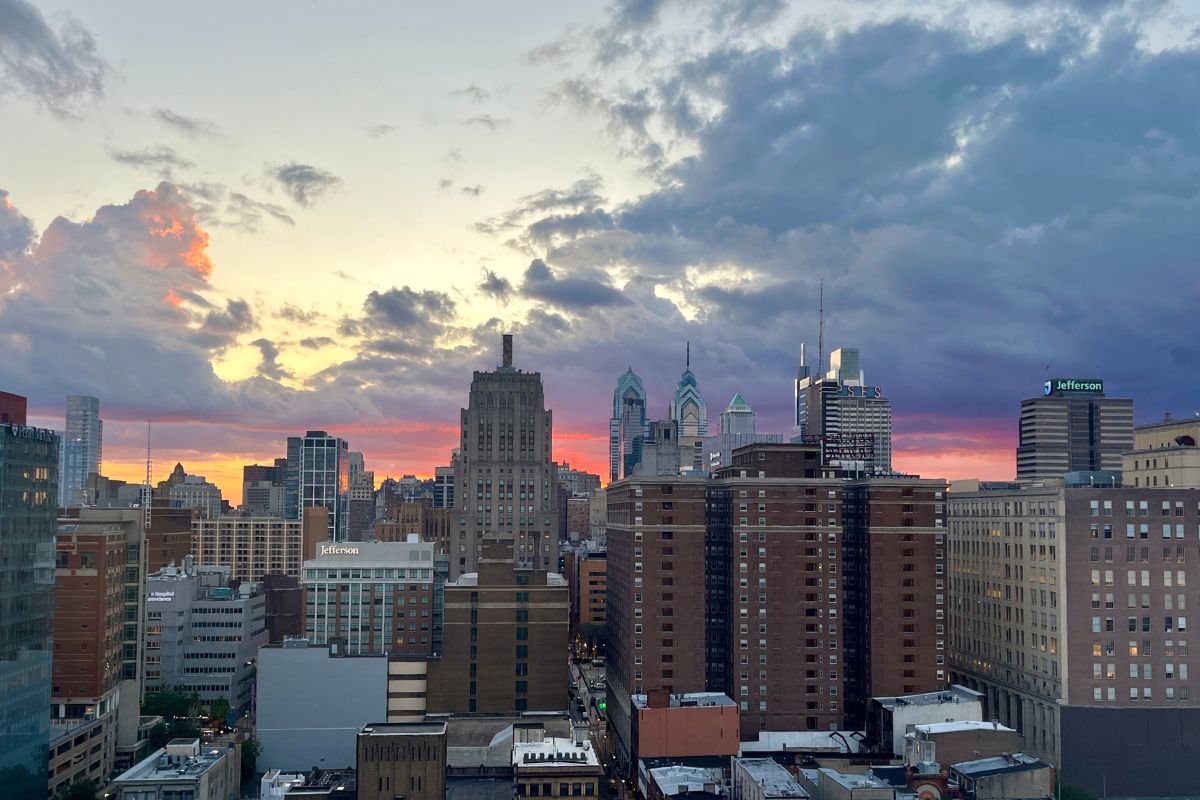Employment rates in Philadelphia bounced back post-pandemic, but the demand for office space isn’t matching up.
Even though overall job growth in Philadelphia increased over the last five years, office sector jobs grew very little in that time. The result? Companies are less interested in office space in Philadelphia’s downtown, despite an increased talent pool in the area, according to the Center City District’s (CCD) Philadelphia Employment Report released today.
Office vacancy is currently at 20.4%, but it would be ideal to get that number closer to 10%, Clint Randall, VP of economic development at CCD, said. Without full and diverse office occupancy, there are fewer opportunities for sustainable jobs and less draw for people to stay in the region, according to the org.
Philadelphia’s post-pandemic recovery was strong, with 13.6% job growth between 2020 and 2024, surpassing the national average of 11.7%.
“We need to find more demand,” Randall said, recommending more housing, restaurants and other non-office development to keep people coming to work in person. “The one way to fuel more demand is to continue to strengthen the mixed-use nature of downtown.”
In 2020, Philadelphia experienced 9.9% job loss, one of the highest rates among the top 25 counties in the United States. But Philadelphia’s post-pandemic recovery was strong, with 13.6% job growth between 2020 and 2024, surpassing the national average of 11.7%.
“The most recent five-year span has been the strongest of the last 15 years, after that sharp post-pandemic drop,” Lauren Smith, manager of economic development at CCD, said.
However, job growth was not even among industries, the report found. Over the last 15 years, healthcare and social services have seen the most consistent growth, increasing by 44% over that time and now making up 32% of total jobs in the city, according to CCD.
Industries like information technology, finance, insurance and real estate, however, have collectively only grown 1% since 2020.
“Diversifying and expanding the tenants that are here creates more opportunities for economic growth,” Randall said. “The more companies are here, the more likely it is that some share of them will grow organically.”
The pros of an active office
Right before the pandemic, Philadelphia’s central business district finally outpaced the suburbs with a higher rate of office leasing, but that momentum quickly faded.
“The amount of demand we see today in a typical quarter is about 42% of what we saw in 2019,” Randall said. “There are lots of things affecting this, [like] hybrid work, challenging interest rate environment.”
This is happening despite the city’s push for widespread return to office, with major companies with established headquarters like Comcast and Independence Blue Cross requiring employees to come in multiple days per week.
Many employees oppose a full in-person schedule, saying they are more productive from home.
The CCD surveyed real estate brokers for the report, who said companies are increasingly considering “hub and spoke” office models, meaning there is one large headquarters with smaller offices located where the workforce is located.
“Many brokers alluded to the idea that the overall product has diminished as being downtown is not as powerful of an argument as it once was,” he said, “at least amongst their clients.”
Active offices also lead to more opportunities for other roles, like cleaners or security, which provide family-sustaining wages.
“The more office tenants that exist here,” Randall said, “the more job prospects exist for the large and growing talent pool we have.”
Plans for more walkability and amenities
Before the pandemic, companies said they wanted to be in Center City because of the proximity to talent, Randall said.
Educated professionals aged 25 to 34 mostly live in Philadelphia, rather than the suburbs. The report concludes that businesses should want to be where that population already is, in Center City. People who live close to their workplace are more likely to stay there, according to the CCD.
Government programs like the Keystone Opportunity Zones, which provide tax incentives to revitalize underdeveloped areas of Pennsylvania, could be an option to make Philadelphia’s business district more attractive, Randall said.
Center City could also improve through planning that promotes walkability and with amenities like restaurants and public parks, according to the report. For example, extending the success of Rittenhouse Square further north by repurposing empty storefronts along Market Street, JFK Boulevard and Arch Street.
“Improving the ground floor experience in the office district,” Randall said. “If you’re considering moving here, if you have a business here, a huge part of that is: How does it look and feel, and what kinds of amenities and services can your workforce access?”
Companies:
Center City District
